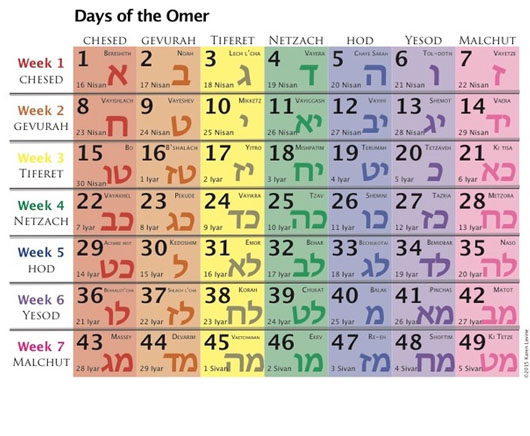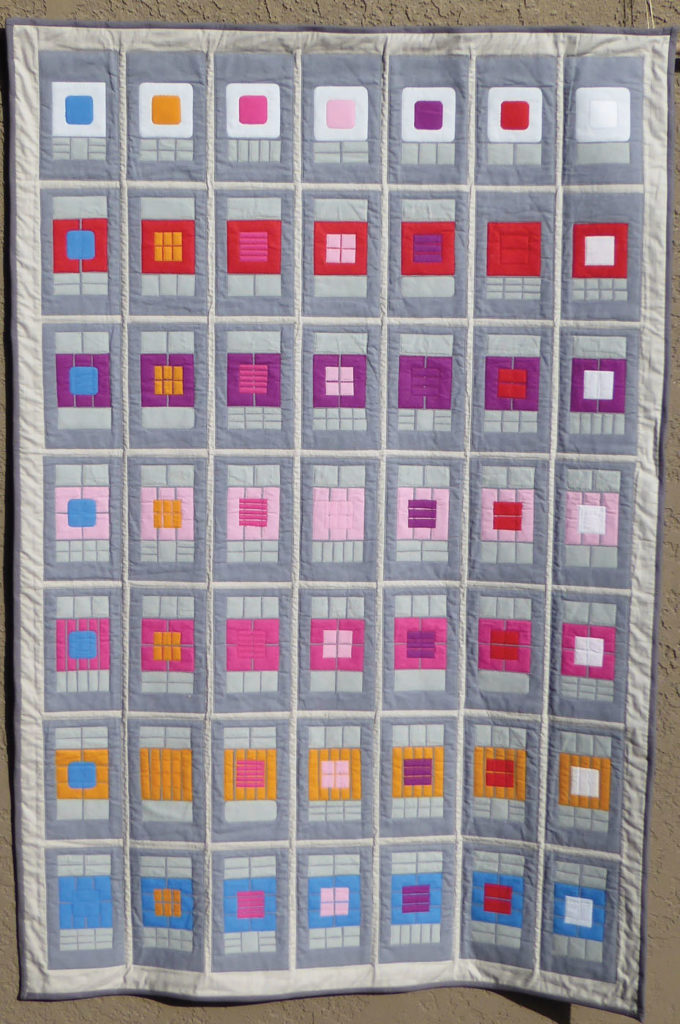Rosh Chodesh women’s group will meet Sunday May 24 at 11 a.m. via Zoom, to welcome the beautiful month of Sivan, and learn about the mystical qualities of the counting of the Omer. Lee Feinstein will talk about the creation of her Omer quilt, and the meanings behind the symbols. Open to all Jewish women. One side effect of zoom is, you can attend from afar! Invite your far-flung friends. Zoom url address
Lee’s quilt, along with a chart of the symbolic meanings of the Omer:
 The omer refers to the 49-day period between the second night of Passover (Pesach) and the holiday of Shavuot. This period marks the beginning of the barley harvest when, in ancient times, Jews would bring the first sheaves to the Temple as a means of thanking God for the harvest. The word omer literally means “sheaf” and refers to these early offerings.
The omer refers to the 49-day period between the second night of Passover (Pesach) and the holiday of Shavuot. This period marks the beginning of the barley harvest when, in ancient times, Jews would bring the first sheaves to the Temple as a means of thanking God for the harvest. The word omer literally means “sheaf” and refers to these early offerings.
The Torah itself dictates the counting of the seven weeks following Passover:
“You shall count from the eve of the second day of Pesach, when an omer of grain is to be brought as an offering, seven complete weeks. The day after the seventh week of your counting will make fifty days, and you shall present a new meal offering to God (Leviticus 23:15-16).”
In its biblical context, this counting appears only to connect the first grain offering to the offering made at the peak of the harvest. As the holiday of Shavuot became associated with the giving of the Torah, and not only with a celebration of agricultural bounty, the omer period began to symbolize the thematic link between Passover and Shavuot.
While Passover celebrates the initial liberation of the Jewish people from slavery in Egypt, Shavuot marks the culmination of the process of liberation, when the Jews became an autonomous community with their own laws and standards. Counting up to Shavuot reminds us of this process of moving from a slave mentality to a more liberated one.







